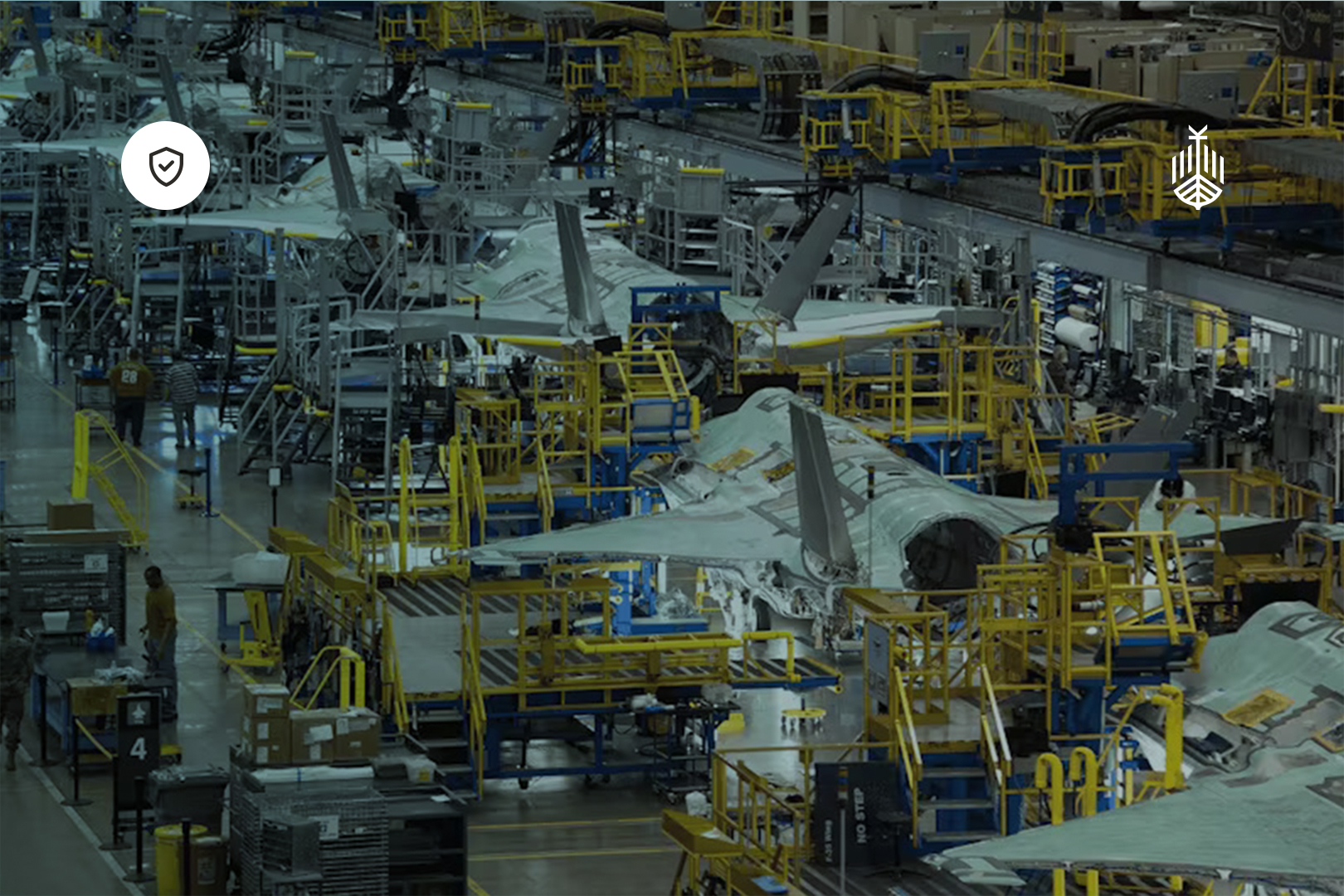Preface
The concept of using technology to ensure the warfighter has the situational awareness to outmanoeuvre its adversaries, both physically and cognitively, to achieve “decision dominance" is applicable to every warfighter not just US SOF. But why do we think the answer lies in technology? Can we create a hyper enabled operator from the inside out rather than the outside in?
The Evolution of the Hyper Enabled Operator
History has shown that mankind’s ability to harness and control new technology lags behind our ability to create and develop the technology. From the constant attempts to retrofit regulation to control the harmful effects of the internet, to the current anxieties regarding the future effects of Artificial Intelligence (AI). The same dilemma faces the military, with advances in defence technology producing systems capable of delivering masses of data to the war fighter without any parallel attention to the operator.
The evolution of military technology has always been the driving force in shaping the capabilities of soldiers. From the introduction of radio communications during the Second World War to the modern-day use of satellite-guided munitions, technology has continuously expanded the battlefield's possibilities. As we stand at the cusp of the next evolution of warfare – using AI and involving advanced cyber threats – should it just be about technological innovation or should we be creating hyper enabled operators to use the hyper enabled technology?
SOCOM has historically been at the forefront of this innovation, integrating advanced technologies into the toolkit of the modern soldier to create the HEO. These include wearable sensors that monitor vital signs and stress levels, real-time data analytics platforms that provide instant intelligence on the battlefield, and enhanced communication systems that allow seamless coordination among units. The result is a soldier who is not only physically equipped for combat but also expected to be cognitively augmented to process and act on information more efficiently than ever before.
Current implementations of these technologies offer a glimpse into the future of warfare. For instance, drones equipped with AI-driven reconnaissance capabilities are providing unprecedented situational awareness. Bio-enhancements, including improved night vision and augmented reality headsets, are further pushing the boundaries of what is possible for the modern warfighter.
Additionally, the development of integrated combat systems that connect operators with autonomous and semi-autonomous platforms is another significant step toward creating hyper enabled operators. These systems allow for synchronised operations across land, air, sea, space, and cyberspace, ensuring that soldiers can seamlessly engage in multi-domain operations.
The Promise of Technology: Achieving Decision Dominance
The primary advantage of the hyper enabled operator lies in their enhanced situational awareness. In the high-stakes environment of modern warfare, the ability to make quick, informed decisions can mean the difference between victory and defeat. Technology plays a crucial role in this process by providing to operators physical enhancements – like augmented reality goggles that provide soldiers with critical information overlaid on their field of vision – right the way through to exoskeletons that can provide enhanced physical endurance.
Tools such as “text to speech” and real time image processing are currently being evaluated on wearable computers right at the tactical edge, and there is a huge push in the use of AI based data processing and predictive analytics that will produce applications that help soldiers assess and respond to threats faster and more accurately than before. A compelling example of this is the integration of AI-driven analytics in mission planning and execution. According to recent studies, units equipped with these tools have seen a significant improvement in mission success rates, with some reports indicating up to a 30% increase in operational efficiency.
However, it's important to note that the hyper enabled operator is not just about faster decisions - it's about better decisions. The integration of AI and advanced analytics allows for a level of insight that was previously unimaginable, enabling operators to anticipate and counter enemy actions with greater precision. But are they ready for the impact of the upgrades in the hardware?
The Human Element: Beyond Technology
While the benefits of technology are undeniable, it is crucial not to overlook the human element in the equation. The reliance on advanced tools brings with it a host of psychological and ethical challenges. For instance, there is the risk of over-dependence on technology potentially leading to vulnerabilities if these systems fail or are compromised. As noted at the NDIA conference that I attended last year, held in Washington DC, entitled ‘Cognitive Health and Performance’, Brigadier General Thomas Palenske, USAF Deputy Vice Commander US SOCOM, said “although our SOF warfighters use sophisticated technology to enhance situational awareness, when the technology fails, they must look to the night sky to navigate by the stars”.
The focus of the SOLIC (Special Operations Law Intensity Combat) conference was aimed at cognitive health and performance of the SOF War fighter including injury prevention. There is a movement here that is beginning to honour and finally build on the SOF Truth No. 1 that “Humans are more important than hardware”. At the conference I spoke with other panel members including Col John Detro, Command Surgeon US SOCOM and Dr Brian Edlow, Critical Care Neurologist, Massachusetts General Hospital who explained that low blast exposure over long periods of time had caused lesions on the brain of many warfighters. Advancements in technology were moving faster than the capabilities of the war fighter. So, with this evidence should we not be focussing on the war fighter, creating HEO’s who are not only ‘hyber enabled’ but ‘hyper capable’ in service and beyond?
The panel announced they had added a fifth Preservation of Force and Family domain called ‘the cognitive domain’. They recognised that prolonged stress can have a profound effect on the performance of the SOF operator and declared “improving cognitive performance is not just good for individuals, it is good for the mission”.
The development of hyper enabled operators should not be limited to external enhancements. Internal development – focusing on the psychological, emotional, and cognitive resilience of soldiers – is equally important. The ability to remain calm under pressure, adapt to rapidly changing situations, and lead effectively in the heat of battle are qualities that no technology can replace. These skills not only build resilience but also long-term human health and performance, making sure the operator is not just battle ready but mission ready.
I also attended SOFIC in 2022 where Lisa Sanders, US-SOCOM Head of S&T, shared with us the focus areas for innovation and development, which included not just technological advancements, such as non-kinetic effects that support the offensive capabilities of the SOF operator, AI/ML edge and defensive cyber, but biotechnologies and human interface. Their focus continues to be on the HEO. She highlighted the need for circadian acclimatisation, improved strength, sleep optimisation and human performance from the small molecule. They understand the benefits of optimisation from the inside out.
Should the SOF no. 1 Truth, “Humans are more important that hardware”, become the focus of all military units?
Ethical Considerations
The integration of advanced technology into military operations also raises significant ethical questions. The prospect of augmenting human soldiers with technology, from cognitive enhancements to physical augmentations, leads to debates about the nature of humanity in warfare. Could new forms of warfare blur the lines between human and machine? The MOD, this month, have referenced “Our Future – Human Machine Teaming” and that “we are accelerating into a technologically enabled future”. But are they going to make sure the operators are ready for the increase in cognitive load?
Furthermore, the use of AI in decision-making, especially in life-and-death situations, introduces moral dilemmas that the military has yet to fully address. Can we trust an AI system to make ethical decisions on the battlefield? What happens when human judgement conflicts with machine logic? These questions must be carefully considered as we move toward a future where technology plays an increasingly dominant role in warfare. In the recent ‘Fly a Drone by Thought Alone’ trial we switched off the AI to demonstrate the operators’ ability to improve not only their performance, but that their improved command and control had a direct correlation to their wellbeing.
International Perspectives
The concept of the hyper enabled operator is not limited to the United States. Both the NATO alliance and the Five Eyes (5IS) alliance are also engaged in developing the hyper enabled operator concept.
NATO's vision focuses on creating a unified force that can operate seamlessly across various domains, with an emphasis on interoperability and collective defence. And as part of this year’s DIANA programme, they released a challenge entitled ‘Human Health and Performance’ where wellbeing and performance are intrinsically linked. There is a common theme here - the human is as important as the technology. Are we beginning to see a change where the human is becoming as important as the hardware?
The Five Eyes (5IS) alliance also places a strong emphasis on both technological superiority and the psychological and emotional preparedness of warfighters. They recognise that the future of warfare will be shaped by a comprehensive approach that integrates advanced technology with a profound understanding of the human element.
Conclusion
The concept of the hyper enabled operator represents a significant shift in how we approach modern warfare. By combining cutting-edge technology with enhancement of the inherent capabilities of soldiers, we can create warfighters who are more effective, efficient, and adaptable than ever before. However, it is crucial to recognise that technology alone cannot guarantee success on the battlefield. The true strength of the hyper enabled operator lies in the balance between technology and internal intelligence.
The key to unlocking performance and resilience in the warfighter comes from an inner strength, rooted in the ability to control one's own thoughts and manage the nervous system. By focusing on training that integrates neuroscience, we can enable soldiers to better monitor, predict, and manage their physiological and psychological states, leading to enhanced decision-making, emotional regulation, and stress resilience. The ability to remain calm under pressure, to adapt swiftly to unforeseen circumstances, and to lead effectively in the most challenging environments are all skills that can be honed through a deeper understanding of one's own mind and body.
A balanced approach will be key to ensuring that the next generation of warfighters is not only hyper enabled but are hyper capable masters of both their environment and themselves. We should recognise that we should not “replace soldiers with machines” but rather “combine them” (US Army Futures Command).

Contributed by Tony White
Tony White is Land Strategy Director at Ultra PCS, where he helps define the business strategy in developing Power, Data and Communications solutions for Vehicle, Soldier and Base platforms. Tony led the team on Soldier Systems creating UltraLynx, the software defined hub that is destined to revolutionise soldier system integration. More recently, Tony has been responsible for creating the brain computer interface solution UltraNIMBUS.














